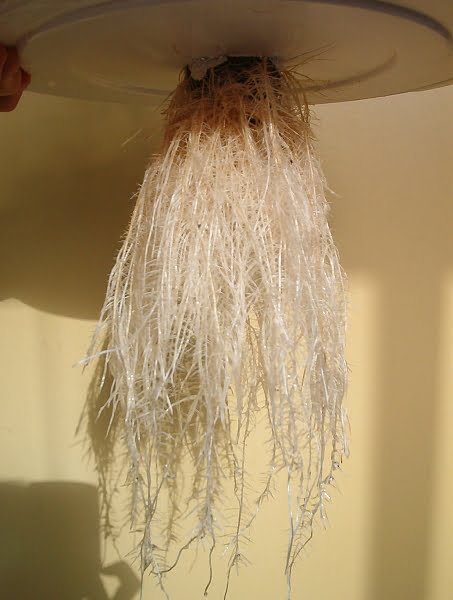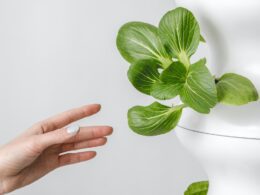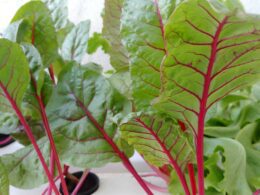Are you considering hydroponics as a way to grow your own food? While hydroponics has many benefits, it’s important to also consider the potential drawbacks.
One con of hydroponics is the high start-up costs. Unlike traditional gardening methods, hydroponic systems require specialized equipment and supplies. These can include grow lights, nutrient solutions, pumps, and reservoirs.
The initial investment can be significant, which may be a barrier for some people. However, it’s important to remember that while the start-up costs may be high, hydroponics can also yield higher crop yields and faster growth rates, which can ultimately lead to cost savings in the long run.
High Start-Up Costs
You’ll need to be prepared to invest a significant amount of money upfront if you want to get started with hydroponics. This is because the equipment and materials needed for this method of growing plants can be quite expensive.
In addition, you’ll need to factor in the cost of electricity and water, which can add up over time. Before you dive into hydroponics, it’s important to do an ROI analysis to determine whether the investment is worth it.
This will help you understand how long it will take to recoup your initial costs and start making a profit. Keep in mind that it may take several years to see a return on your investment, so you’ll need to be patient and committed.
If you’re concerned about the high start-up costs of hydroponics, there are funding options available to help you get started. For example, you may be able to apply for a small business loan or seek out investors who are interested in supporting your venture.
Just be sure to carefully consider your options and choose a funding strategy that aligns with your long-term goals.
Potential for System Failures
If your hydroponic system fails, you’re going to be seriously disappointed and frustrated. Unfortunately, hydroponic systems are not immune to failures. They may be less susceptible to pests and diseases, but they do require regular maintenance to keep them running smoothly.
Here are some potential system failures you should be aware of:
-
Pump failure: The pump is the heart of your hydroponic system. Without it, water and nutrients won’t circulate properly, and your plants won’t thrive.
-
Power outage: A power outage can quickly lead to disaster in a hydroponic system. Without electricity, your pump won’t work, and your plants won’t receive the nutrients they need.
-
Clogged or damaged lines: If your lines become clogged or damaged, water and nutrients won’t reach your plants. This can impact their growth and nutrition.
Maintenance requirements are one of the biggest cons of hydroponics. If you’re not willing to invest the time and effort to keep your system in good working order, you’re likely to experience system failures. Regular cleaning, checking for leaks, and replacing worn or damaged components are all part of the maintenance routine.
Even if you follow all of these steps, however, you may still experience failures. The impact of system failures on plant nutrition cannot be overstated. If your hydroponic system fails, your plants won’t receive the nutrients they need to grow and thrive. This can result in stunted growth, poor yields, and even crop failure.
To avoid these issues, it’s important to stay on top of your maintenance routine and address any issues as soon as they arise. With proper care and attention, you can enjoy all the benefits of hydroponics without the risk of system failures.
Limited Crop Variety
When it comes to choosing what to grow in your hydroponic system, there are limited crop varieties available. Unlike traditional farming where crops can be grown in soil, hydroponic systems rely on a nutrient-rich solution for plant growth. This means that some crops may not thrive in this environment, limiting the options for growers.
Another issue with hydroponic systems is the need for crop rotation. Without this, plants can become susceptible to various pests and diseases. However, in hydroponic systems, crop rotation can be difficult due to the limited variety of crops available. This can lead to increased risks of pests and diseases spreading throughout the system, which can be detrimental to plant health.
Lastly, some people are concerned about the use of genetic modification in hydroponic crops. While this is not limited to hydroponic systems, it’s worth mentioning that some growers may use genetically modified seeds to increase yields or improve resistance to pests and diseases. This can be a controversial issue for some consumers who prefer organic or non-GMO produce.
Overall, while hydroponic systems offer many benefits, limited crop variety and concerns over genetic modification can be considered cons.
Can Common Hydroponic Lettuce Problems Be a Con of Hydroponics?
Common hydroponic lettuce problems can sometimes be a drawback of hydroponics. Issues like nutrient deficiencies, root rot, and pest infestations may arise, affecting the growth and quality of lettuce. However, these problems can usually be managed effectively with proper care, monitoring, and the implementation of preventive measures.
Environmental Concerns
Now let’s talk about how you can make a positive impact on the environment with your hydroponic system. While hydroponics may seem like a more eco-friendly option for growing plants, it does have its environmental concerns.
Here are four things you can do to mitigate these concerns:
-
Monitor your water usage: Hydroponic systems require water to function, but it’s important to keep track of how much water you’re using. Make sure you’re not wasting water and consider using a recirculating system to conserve water.
-
Use renewable energy sources: Hydroponic systems require energy to run, but using renewable energy sources like solar or wind power can significantly reduce your carbon footprint.
-
Choose sustainable materials: When building your hydroponic system, consider using materials that are environmentally friendly and sustainably sourced. Avoid using materials that are harmful to the environment or non-biodegradable.
-
Dispose of waste responsibly: Hydroponic systems produce waste, such as spent nutrient solutions and plant matter. It’s important to dispose of these materials properly to minimize their impact on the environment.
By taking these steps, you can reduce the environmental impact of your hydroponic system and contribute to a more sustainable future. Remember, every small action counts when it comes to caring for our planet.
Lack of Natural Pest Control
You may find it challenging to control pests in your hydroponic system without relying on natural methods. Unlike traditional farming, hydroponics lacks the natural checks and balances that occur in nature. Pests and diseases can spread quickly and easily in a hydroponic system, causing damage to your crops and ultimately reducing your yields.
One way to manage pests in hydroponics is through integrated pest management (IPM). This approach involves using a combination of methods to control pests, including cultural, physical, chemical, and biological controls. While chemical controls are often effective in killing pests, they can also harm beneficial insects and pollinators, and may leave harmful residues on your crops. Biological controls, on the other hand, use natural predators and parasites to control pests, which can be a safer and more sustainable alternative.
Using biological control methods in your hydroponic system may require some extra effort, but the results can be worth it. You can introduce beneficial insects like ladybugs or lacewings, which will eat harmful pests like aphids. You can also use nematodes, which are small worms that can parasitize and kill harmful pests like thrips. By using these natural methods, you can reduce your reliance on chemical pesticides and create a more sustainable and eco-friendly hydroponic system.
Frequently Asked Questions
How much does it cost to maintain a hydroponic system?
Maintaining a hydroponic system can be cost-effective when compared to traditional farming methods. However, it’s important to conduct a cost analysis to determine the initial investment and ongoing expenses.
Maintenance tips, such as monitoring pH levels, nutrient levels, and ensuring proper lighting, can also impact the overall cost. It’s recommended to regularly clean and replace any necessary equipment to prevent issues and ensure optimal plant growth.
By following these maintenance tips and conducting a cost analysis, you can ensure a successful and cost-efficient hydroponic system.
Is it difficult to troubleshoot and repair a hydroponic system?
If you’re considering a hydroponic system, it’s important to know that troubleshooting can be a challenge. There are many factors that can affect the health of your plants, and it can take some trial and error to determine the root cause of any issues. However, with a bit of patience and some research, you can usually solve most problems.
Another thing to consider is maintenance costs. While hydroponic systems can save you money on water and fertilizer in the long run, there are still initial costs to consider, such as purchasing equipment and setting up the system. Ongoing costs include electricity to power pumps and lights, and replacing any worn-out or damaged components.
Overall, while there are some challenges to troubleshooting and maintaining a hydroponic system, the benefits of growing your own fresh produce can make it worth the effort.
Can hydroponics be used to grow all types of plants?
If you’re considering hydroponics for your plant growing needs, it’s important to note that while certain plants thrive in a hydroponic system, others may not fare as well.
Hydroponics can offer benefits for plants such as herbs, leafy greens, and certain vegetables, especially those that require a lot of water and nutrients. However, plants that need deeper root systems or require a lot of space may be limited in a hydroponic setup.
It’s important to research which plants are best suited for hydroponics before investing in a system. While hydroponics can be a great option for certain plants, it’s important to understand its limitations for others.
What impact does hydroponics have on water usage?
When it comes to hydroponic farming, one major advantage is its impact on water usage. Hydroponic systems are designed to conserve water by using only what the plants need and re-circulating it back into the system.
This is in contrast to traditional farming practices that use large amounts of water, often leading to water waste and depletion. Hydroponic farming also allows for the use of water conservation methods such as drip irrigation and water sensors, which further reduce water consumption.
By choosing hydroponic farming, you can not only grow more plants in less space but also contribute to a more sustainable and water-efficient environment.
What alternatives are there to using chemical pesticides in hydroponics?
Looking for alternatives to chemical pesticides in hydroponics? There are plenty of organic solutions available that can help you manage pests without harming your plants or the environment.
One popular method is integrated pest management, which involves using a combination of cultural, physical, and biological controls to keep pests at bay. This might include things like introducing predatory insects, using sticky traps, or simply maintaining a clean and well-ventilated growing environment.
By embracing organic solutions like these, you can protect your plants from harm while also promoting a healthier and more sustainable growing practice.
Conclusion
So, you’ve learned about the pros and cons of hydroponics. While hydroponics has many benefits such as efficient use of water and space, there are some drawbacks to consider.
One major con of hydroponics is the high start-up costs. You’ll need to invest in equipment, nutrients, and a suitable growing environment, which can be pricey.
Additionally, hydroponic systems can be prone to failures such as power outages or nutrient imbalances. With limited crop variety, environmental concerns, and a lack of natural pest control, it’s important to weigh the pros and cons to determine if hydroponics is the right choice for you.









